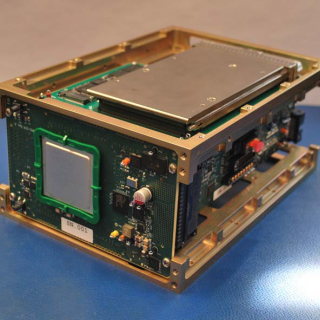

Innovation and Collaboration
The Technology Office works to enhance inventiveness and innovation at the Laboratory through various opportunities and Laboratory-wide activities that sustain a culture of creative problem solving and innovative thinking.

Technology Office Challenges
Each year, we design scenarios that challenge multidisciplinary teams to invent creative solutions to emerging problems affecting national security. The goals of these challenges are to promote innovation, encourage people to work in new areas, and have fun.
Featured News
Symposia
We organize events at which researchers from national labs, academia, the military, and industry can learn about the latest developments in a wide range of technologies that can have significant impact on national security.
The Advanced Research Technology Symposium (ARTS) is typically held at MIT to connect with academics, students, and entrepreneurs on MIT campus and in the New England area. The symposium highlights some of the most pressing challenges confronting our nation's security and well-being, and proposes ways advanced technology can help address these challenges. Presentations, poster sessions, and panel discussions engage attendees.
The Recent Advances in Artificial Intelligence for National Security (RAAINS) focuses at a deep-technical level on current state-of-the-art AI applications that have been developed for national security needs. The workshop showcases examples of significant progress in applying AI and provides a glimpse into promising future R&D into AI technology.
Best Invention and Best Paper
Annually, to reward experimentation and creative thinking, we recognize one or two inventions that demonstrate an innovative solution to an engineering problem.
We also recognize a paper that presents the results of creative, high-caliber research, fostering the importance of publishing findings that can fuel the development of new concepts and technologies.
2023 Best Invention
Engineered Substrates for Rapid Advanced Imaging Sensor Development, invented by Dr. Kevin K. Ryu, Dr. Brian F. Aull, Joseph S. Ciampi, Renee D. Lambert, Dr. Christopher W. Leitz, K. Alexander McIntosh, Steven Rabe, Dr. Daniel R. Schuette, and David Volfson.
This invention of engineered substrates dramatically reduces the time and cost of developing advanced silicon imaging sensors. The substrates prebuild most steps of the back-illumination process (a method to increase the amount of light that hits a pixel) directly into the starting wafer, before device fabrication begins. Then, a specialized process allows the detector substrate and readout circuits to be mated together and uniformly thinned to microns in thickness at the die level rather than at the wafer level. Both aspects can save a project millions of dollars in fabrication costs by enabling the production of small batches of detectors, instead of a full wafer run, while improving sensor noise and performance.
2023 Best Paper
A Wide-Area Deep Ocean Floor Mapping System: Design and Sea Tests, written by Paul S. Ryu, David D. Brown, Kevin D. Arsenault, Dr. Byung Gu Cho, and Dr. Andrew I. March, with co-authors Dr. Wael H. Ali, Dr. Aaron Charous, and Prof. Pierre F.J. Lermusiaux, all of MIT, and published in Geomatics, vol. 3, no. 1, 2023, pp. 290–311.
This paper was selected for description of significant contributions to ocean floor mapping, including the development of precision-relative navigation for autonomous surface vessels, with wide-ranging applications in oceanography, climate change modeling, infrastructure monitoring, disaster response, and natural resource exploration.



